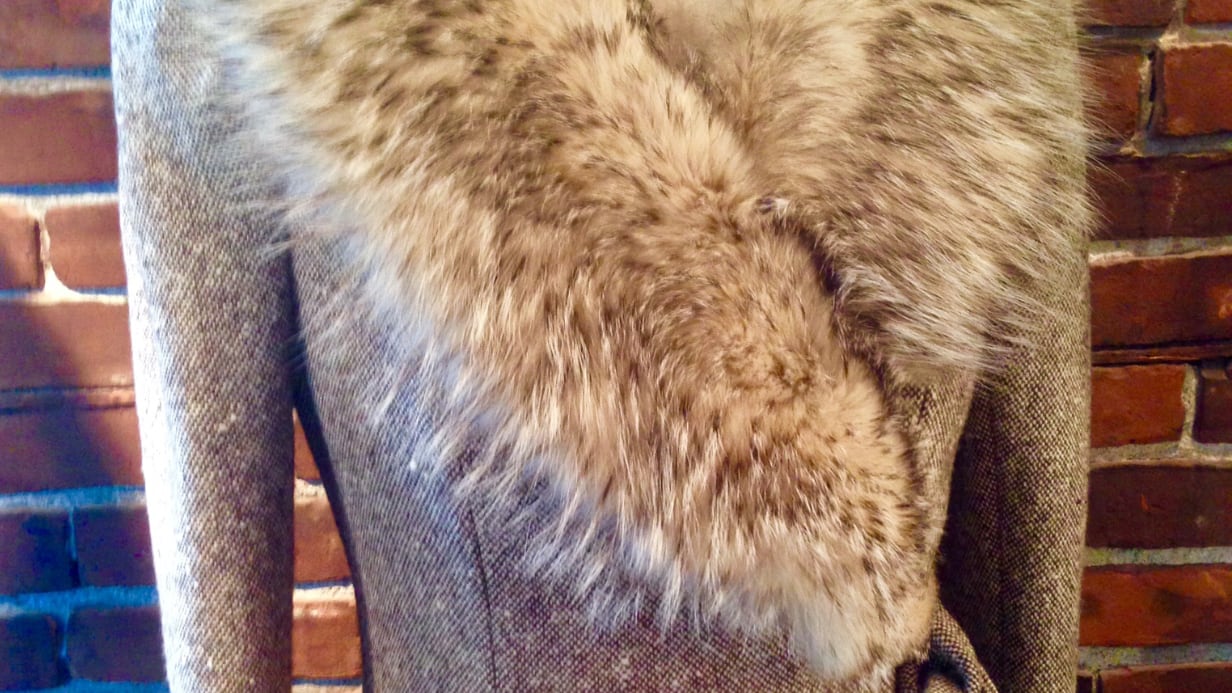We see them more and more these days, whether at the grocery store or in a music video.
Yes, it's becoming hard to deny the prevalence of fur coats.
I encountered my first in-the-flesh fur at a quaint vintage store near downtown. At the very back of the small shop hung a row of furs. I slipped my arms into the satiny sleeve of a coat. It was deliciously soft and warm, and I wore it out of the shop.
When I went to dinner that night, I did so apprehensively.

I expected criticism for my insensitive purchase, if not while on the town then undoubtedly at my progressive liberal arts college. Maybe it is because I'm a trendsetter, or maybe it is because I became more aware of them, but soon I started noticing fur coats sprinkled throughout the crowds of Portland. No longer do furs just appear playfully in music videos and at dance parties.
From that first night onward, the only thing I've received is positive feedback.
Indeed, the vintage rabbit fur coat has been met with nothing but a desire to touch it and loud admiration. Those who do not view the jacket in a positive light are, I suspect, too polite to say so.
The admiration I do get does not reflect my on-point style choices. It reflects the fact that fur is gaining ground in the cultural mainstream.
Target, The Gap, H&M—this winter season, such retailers are pushing the trend with an alarming number of faux furs that are almost as soft as the real stuff. From boxy millennial-pink plush to imitation mink and shearling, faux fur is cozying up to the conventional and thus making room for the real.
You'll still see more faux fur than real fur on any given night out, but that's not because real fur is too expensive. Fur is a consistently fraught topic.
Historically, Portland has not been a hospitable place for furriers, and the people who like their products. In 2007, the century-old Schumacher Furs left town after protesters educated the public on fur industry practices. Nicholas Unger Furs had constant conflict with protesters, including a man who set himself on fire there. Their downtown retail store closed permanently, and though they do service existing clients, they do not accept new ones.
I spoke to Hattie of Hattie's Vintage Shop on Burnside about her selection of fur. She says that she's seen an increase in fur sales, and has already sold about 20 pieces this season. She sells most of her furs to young Portlanders—the very population that also buys faux furs from chain retailers.
Tourists visiting from New York and L.A., where vintage prices tend to be higher, are another market that buys readily.
If we decide to wear fur, we should do it mindfully.
Vintage fur comes with only half the negative vibes as new fur, as well as at half the cost. Though the end result of this furry chain is an increase in demand for new product, there is no reason that a demand for sustainable fur can't come right along with it. There are already options like wild-caught furs and furs from invasive species to satisfy this desire.
In a world full of athletic fleeces and primaloft, a vintage fur coat is the ultimate outerwear; warm, water resistant, and very sexy, it is just as functional as any high tech outdoor garment.
Silky fur is a refreshing change from irritating and potentially toxic plastics brushing up against your skin, and the coat itself is a good way to start a conversation during the dark and lonely winter months.
Fur was made by nature to keep the elements away, and even in a rainy climate that occasionally drops two feet of snow, it will keep you toasty.
